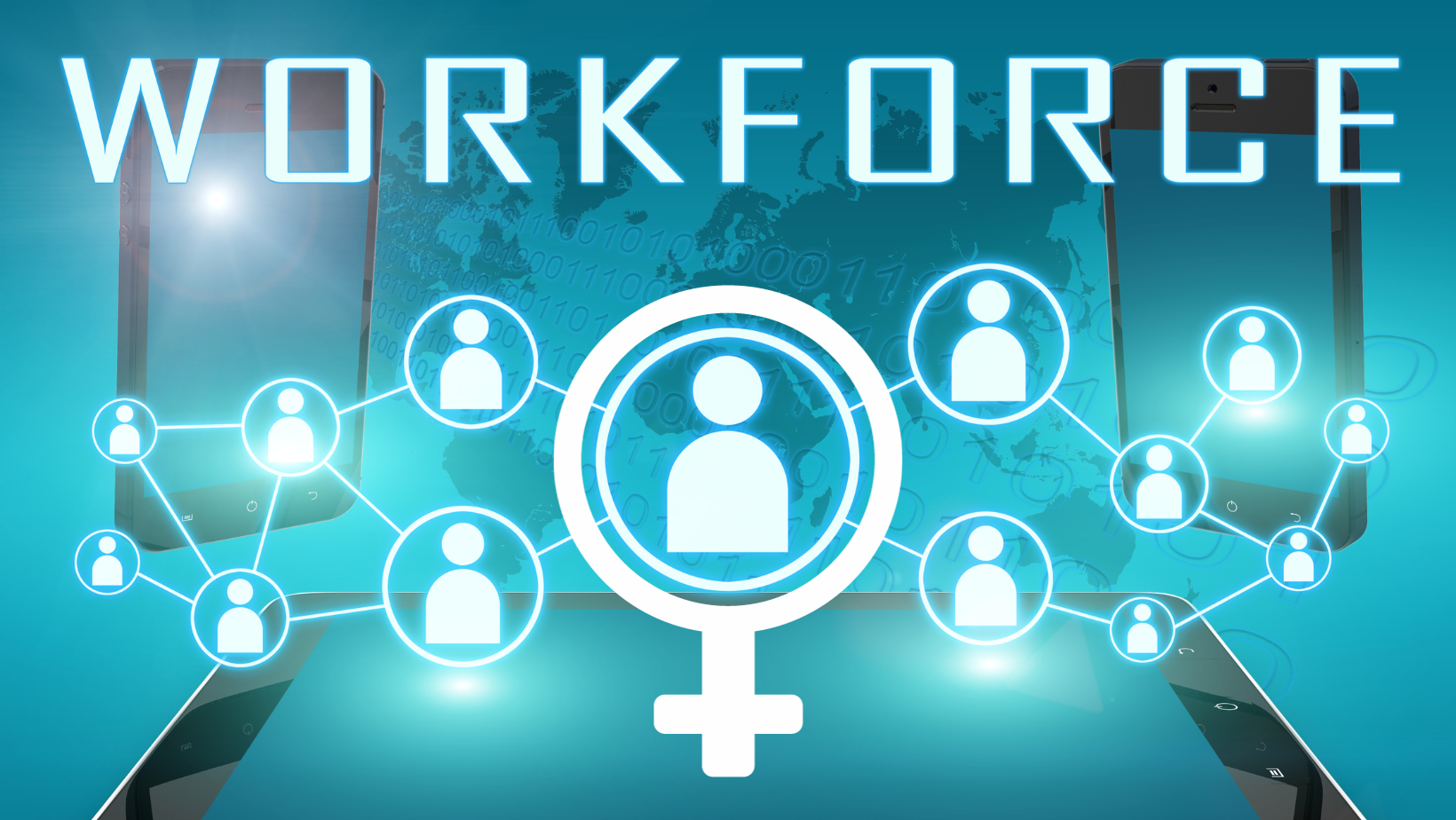Advancing Equality: Women in the Workforce Today

Author: Marie Strawer, UMSA Managing Director
October 4, 2023
In recent years, there has been a growing recognition of the importance of gender diversity in the workforce and the need to address longstanding disparities. Organizations and researchers have conducted numerous studies to gain insight into the status of women in various industries, shedding light on both progress and persistent challenges. This exploration unveils a complex narrative, one where women continue to make strides in some areas while facing considerable obstacles in others.
 As we delve into recent information about women in the workforce, we find a multifaceted story. While women now make up a substantial portion of the workforce, they remain underrepresented at the upper echelons of corporate leadership, a stark reminder of the glass ceiling that persists.
As we delve into recent information about women in the workforce, we find a multifaceted story. While women now make up a substantial portion of the workforce, they remain underrepresented at the upper echelons of corporate leadership, a stark reminder of the glass ceiling that persists.
Furthermore, the technology sector struggles with its own set of gender-related issues. Despite efforts to encourage more women to pursue careers in technology, the numbers reveal a significant gender gap, particularly in leadership roles.
In this exploration, we will delve into these recent findings, uncovering the hurdles and triumphs of women in the workforce. From the boardroom to the technology leaders, from career advancement to pandemic-era challenges, this examination will provide valuable insights into the status of women in the workforce and the ongoing efforts to fort greater equality and inclusivity.
Recent Studies on Women in the Workforce
Every year since 2015, Lean In and McKinsey & Company have conducted a study to gain insights into diversity in the workplace. The 2022 Lean In study highlights that women comprise 48% of the workforce, but only 1 in 4 women are at the c-suite level. To have more women at the top levels of a company, we need to look at the problems in the pipeline. The study points out two main issues, the “broken rung” and the rate at which women leaders leave companies.
The study also found that there is still the “broken rung” keeping women back from advancing. This means that for every 100 men being promoted to manager, there are only 87 women are promoted. I had not heard of “broken rung” before, but I knew exactly what it meant. The term “broken rung” refers to a broken step in the career advancement ladder within the corporate world. With fewer women getting promoted early on, they get trapped in lower-level positions.
The study shows that for every woman promoted to director, two women leave the company. They found that women are leaving their companies at a higher rate than men. Many women switch jobs for better opportunities, but some want to downshift or leave the workforce altogether. Women leaders are more likely to report burnout and are more likely to switch jobs because of unmanageable workloads. Part of this burnout comes from the fact that the study also showed that as women move up in their careers, women continue to do half of the household work and childcare. In contrast, as men move up in their careers, they do less household work.
Women in Technology
 Over the last 20 years, there has been focus on getting more girls involved in math and computer science. Unfortunately, the latest data show that women earn a low share of degrees in mathematics and computer sciences. The National Center for Science and Engineering Statistics released their latest study in 2023. This study showed a small increase in women’s representation for all mathematics and computer science degree levels in the year 2020. Women’s representation increased the most at the master’s degree level, where the share of degrees earned by women grew from 31% to 35%.
Over the last 20 years, there has been focus on getting more girls involved in math and computer science. Unfortunately, the latest data show that women earn a low share of degrees in mathematics and computer sciences. The National Center for Science and Engineering Statistics released their latest study in 2023. This study showed a small increase in women’s representation for all mathematics and computer science degree levels in the year 2020. Women’s representation increased the most at the master’s degree level, where the share of degrees earned by women grew from 31% to 35%.
With this information, we should not be surprised by dire statistics of women in the technology industry. According to a Zippia Study, women hold 44% of the STEM degree, but make up only 28% of the technology workforce. Women hold fewer than 20% of the technology leadership roles. This study also shows that women in technology also experience burnout. Not only do women in technology take on more at home, but since the pandemic, they are taking more work at work.
The “broken rung” is evident when you look at female representation in technology jobs. Female representation is highest for junior-level jobs, drops for mid-level jobs and then drops again for senior-level jobs.
Lay-Offs
A surprising trend I found while researching is the pandemic’s impact on women in technology. A study by Trust Radius showed that women in technology were twice as likely to be furloughed or lose their job during the pandemic. It’s estimated that 5 million women lost their jobs since February 2020.
A study by WomenTech Network showed that during the 2022 tech layoff, 69.2% of those laid off were women. These studies show a disproportionate impact of layoff on women in technology.
Conclusion
The recent data and insights into women in the workforce paint a vivid picture of progress made and the distance yet to be covered on the path to gender equality. While women have undeniably made significant strides in terms of representation, the lingering disparities in leadership roles and the ever-present “broken rung” challenges underscore the need for sustained efforts.
The findings in corporate settings highlight that true diversity and inclusion are not just about headcount, but about creating an environment where women have equal opportunities to climb the career ladder and reach executive positions. Addressing this challenge requires comprehensive strategies, from mentorship and sponsorship programs to policies that promote work-life balance and shared household responsibilities.
In the world of technology, there exists a call-to-action to bridge the gender gap, not only in terms of workforce representation but also in leadership roles. Encouragingly, there has been progress at the master’s degree level, indicating that more women are pursuing advanced education in STEM fields. However, this progress must extend to the workplace, fostering environments where women can thrive, innovate, and lead.
The unexpected impact of the COVID-19 pandemic on women in technology serves as a stark reminder of vulnerabilities within the workforce, as well as the resilience and adaptability of women who have navigated these challenging times.
Lastly, the recent data on women in the workforce emphasizes the importance of continued efforts to dismantle barriers, challenge traditional norms, and foster environments where women can excel in their careers. Achieving gender equality is a strategic advantage for organizations, unlocking the full potential of a diverse and talented workforce. Through heightened awareness, unwavering commitment, and purposeful actions, we can draw nearer to a future where everyone, regardless of gender, enjoys equal opportunities to flourish and assume leadership roles in the workforce.




